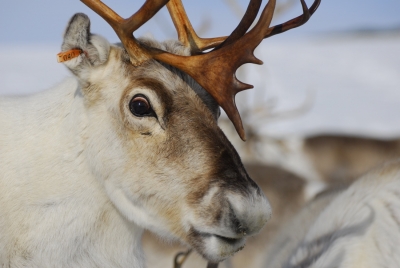
The eyes of the Arctic reindeer change colour with the seasons, from golden in the summer to a deep blue in winter. The part that changes colour is the tapetum lucidum – a mirrored layer behind the retina. The interminable Arctic winter forces
the reindeers’ pupils to dilate for months to allow more light in; pressure in the eye increases, preventing fluid from draining naturally. This compresses the tapetum’s collagen fibres, which in turn makes it reflect shorter wavelengths, notably the blue light common in Arctic winters. In summer, with the usual gaps between the fibres, the tapetum reflects yellow wavelengths. The technique allows the reindeer to make the most of changing light levels in their extreme habitat.
In dark conditions, muscles in your irises contract to dilate your pupils and allow more light into your eyes. When it’s bright again, the irises widen and the pupils shrink. The same thing happens in reindeer, but the interminable Arctic winter forces their pupils dilate for months rather than hours. Over time, this constant effort blocks the small vessels that drain fluid out of the eyes. Pressure builds up inside the eyeballs, and they start to swell. “The animal’s moving towards glaucoma,” says Jeffery.
These events also change the tapetum. This layer is mostly made up a collagen, a protein whose long fibres are arranged in orderly rows. As the pressure inside the eye builds up, the fluid between the collagen fibres gets squeezed out, and they become more tightly packed. The spacing of these fibres affects the type of light they reflect. With the usual gaps between them, they reflect yellow wavelengths. When squeezed together, they reflect… blue wavelengths.
Credit : National Geographic Society
Picture Credit : Google
Leave a Reply